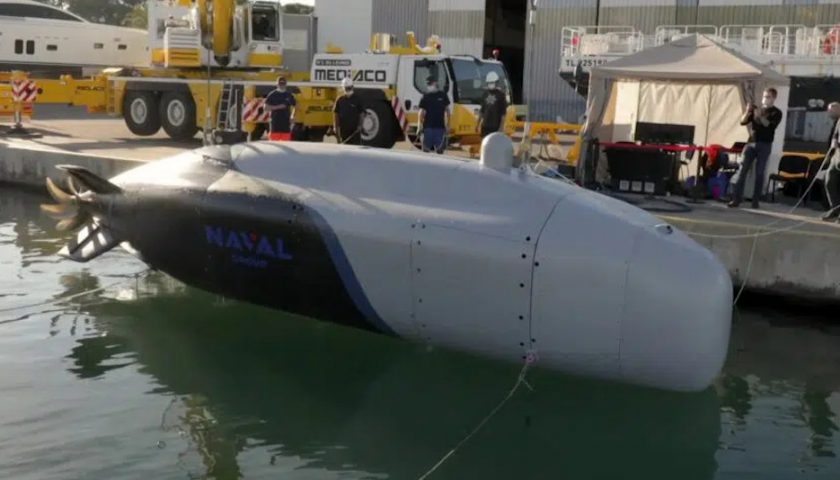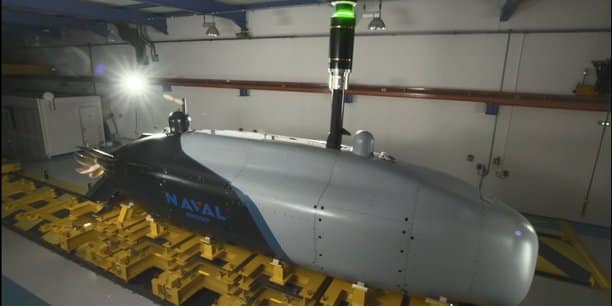Following the cancellation of the Australian contract for the design and manufacture of 12 conventionally powered Attack-class submarines derived from the Shortfin Barracuda, the French shipbuilder Naval Group was in an unenviable position, both its image international community had been altered by this decision. Some Anglo-Saxon commentators even saw in it the opportunity to move towards a consolidation of European naval production means, in other words, to eliminate French from this market of conventional submarines which are disputed by 4 European manufacturers, and which represents more than half of its exports over the past 20 years with contracts in India, Brazil and Malaysia.
If the confirmation from Athens of an order for 3 FDI Belharra frigates revived the group, and despite the opportunity that opened up to it concerning the export of nuclear-powered submarines after Washington and London have opened this Pandora's box, the French industrialist still needed a major announcement in the submarine field to restore its image on the international scene.
This took place during the Naval Group Innovation Days, at the beginning of June 2021, an event organized to promote the innovations of the French shipbuilder, in the form of a long-endurance underwater combat drone, not as a digital model or distant promise, but as a demonstrator already assembled and even experienced in docks, and which will begin a test phase in the coming days for 2 months, in order to evaluate its performance and validate the options technology used for its design.
The project, developed in great secrecy and on own funds by Naval Group, does much more than put the industrialist back in the saddle in the field of submarine warfare, because it opens up unparalleled operational, industrial and commercial prospects, in particular for face the new challenges that are emerging on the oceans.
An underwater drone built for combat
The demonstrator tested by Naval Group is 10 meters long for a displacement of 10 tonnes, and takes on a biomimetic hydrodynamic shape inspired by large cetaceans such as the sperm whale. According to Naval Group, it is able to navigate, in its current form, several days in autonomous diving, at a cruising speed of 6 knots, and a maximum speed of 15 knots.
It carries a hull sonar for underwater detection, as well as a radar and an Electro-optical system on mast when it evolves near the surface. It has several communication systems, including a satellite link, a radio link and a low frequency link, allowing it to exchange with a ship, or a control station, in the form of compressed encrypted messages to increase the stealth of the ship. gear. Finally, it has a navigation, sensor analysis and mission control system based on artificial intelligence combining Machine Learning and deterministic analyzes to ensure fine control of the drone's actions.

But this data only concerns the demonstrator currently being tested. Indeed, according to Naval Group, this family of underwater combat drones will be able to go far beyond the characteristics of its current demonstrator, both from the point of view of performance and mission profiles. Thus, the production version on which the engineers of Naval Group are working will be longer, 13 meters for a displacement of 20 tons, and will have autonomy at sea, discretion and a speed greater than that of the demonstrator.
It should be noted in this respect that the scale models presented during the event were equipped with a pump jet, a streamlined propeller to reduce noise and the risk of cavitation at higher speeds. Above all, beyond the ISR intelligence missions for which the basic model is designed, a more imposing model, 20 meters long, will have an AIP propulsion system giving it a diving autonomy of several weeks, and the potential ability to carry large loads, including anti-submarine or anti-ship torpedoes, and naval mines, opening up an immense range of possibilities at the operational level.
Force multiplier and denial of access
In fact, Naval Group's new underwater drone is positioned as a formidable fighter, acting as what the military call "a force multiplier", ie allowing to increase the operational capacities of other units. Like air combat drones, this will allow for example to carry out intelligence missions on the opposing coast, or as close as possible to the enemy naval system, without having to risk a submarine and its crew in this perilous mission. .

75% of this article remains to read,
Subscribe to access it!
The Classic subscriptions provide access to
articles in their full version, and without advertising,
from 6,90 €.
Newsletter subscription
Register for the Meta-Defense Newsletter to receive the
latest fashion articles daily or weekly


[…] […]